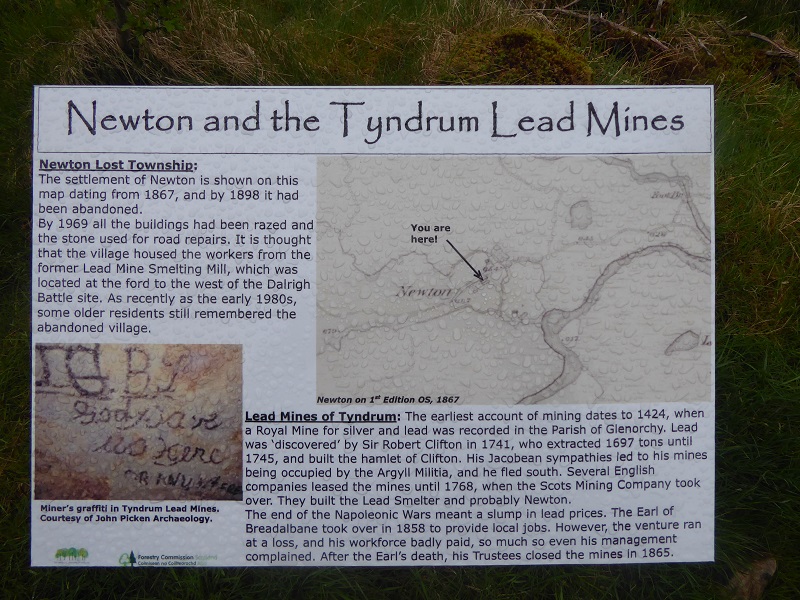
Both our National Parks have two statutory objectives which incorporate the term ‘sustainable’:
- “to promote the sustainable use of natural resources”, and
- “to promote sustainable economic and social development of the area’s communities”.
As I revealed last week (see here), while the Loch Lomond and Trossachs National Park Authority has adopted a policy on mining which states there should be NO mining in the National Park except where this is in the national interest and accepts that there is NO national interest at stake at Cononish, nevertheless its staff (code senior management team) are recommending that policy should be ignored because of the alleged LOCAL economic benefits the gold mine could bring to the area.
The old LLTNPA Board fell for these arguments when it approved the planning application that has now expired. It should not do so again. This post takes a critical look at the social and economic benefits which it is claimed that the Cononish goldmine will bring to the local area and ends by proposing an alternative way forward.
Socio-economic impact study
Scotgold have not produced a new socio-economic impact study but simply updated the jobs figures from a 2011 study on the socio-economic impact of the mine they commissioned from David Bell at Stirling University (see here). David Bell may be an eminent economist but that report in my view simply provides the evidence of the dangers of academics being paid to do work by Developers:
“Under present conditions in the gold market, it is extremely unlikely that the mine would not be viable during its expected lifetime”
That key conclusion of the 2011 Report turns out to have been badly wrong, the mine that was approved has not been viable and none of the report’s predicted economic benefits have happened. This is why the LLTNPA is being presented with a planning application whose main purpose is to reduce costs, namely those required to construct a tailings dam (which would require a large amount of capital up front) and to return a high proportion of the tailings to the mine once mining had finished.
While the LLTNPA openly admit that the socio-economic report is badly out of date, the Committee Report provides no critical analysis of the findings of that report (which helped convince the Board to approve previous planning application) in the light of experience and provide no other analysis of the social and economic impacts. Indeed there is NO impact of the SOCIAL impacts of the proposed development either in David Bell’s old report or the Committee Report. The LLTNPA has simply failed to look at this and assumed that new jobs are all that matters.
How many and what type of jobs would the gold mine create?

The jobs sound great don’t they, 62 over 10 years or 37 over 17 years, and the average salaries appear to have increased? Except that:
- the jobs benefits are entirely dependant on the mine staying in production. It might not because the plan now is to extract the richest ore first and if Scotgold don’t have to return tailings to the mine they could now abandon it at any time.
- the increased average salary – and no explanation is given for why this figure has increased – means that those at Cononish appear to have been brought into line with the average salaries in English mines which was £30,600 in 2011.
- Scotgold have used average and NOT median salaries. Their Chief Exec currently receives £100k and will no doubt get more if planning is approved, there will be other high salaries paid for expert mining jobs and all of that will be offset by lower salaries paid to manual labourers and security guards. These may be slightly better paid than those in the local tourist industry but Scotgold and the LLTNPA are keeping coy about the exact figures. Whether these will be adequate compensation for the working conditions (working down a dusty mine, with chemicals or outdoors) is another matter.
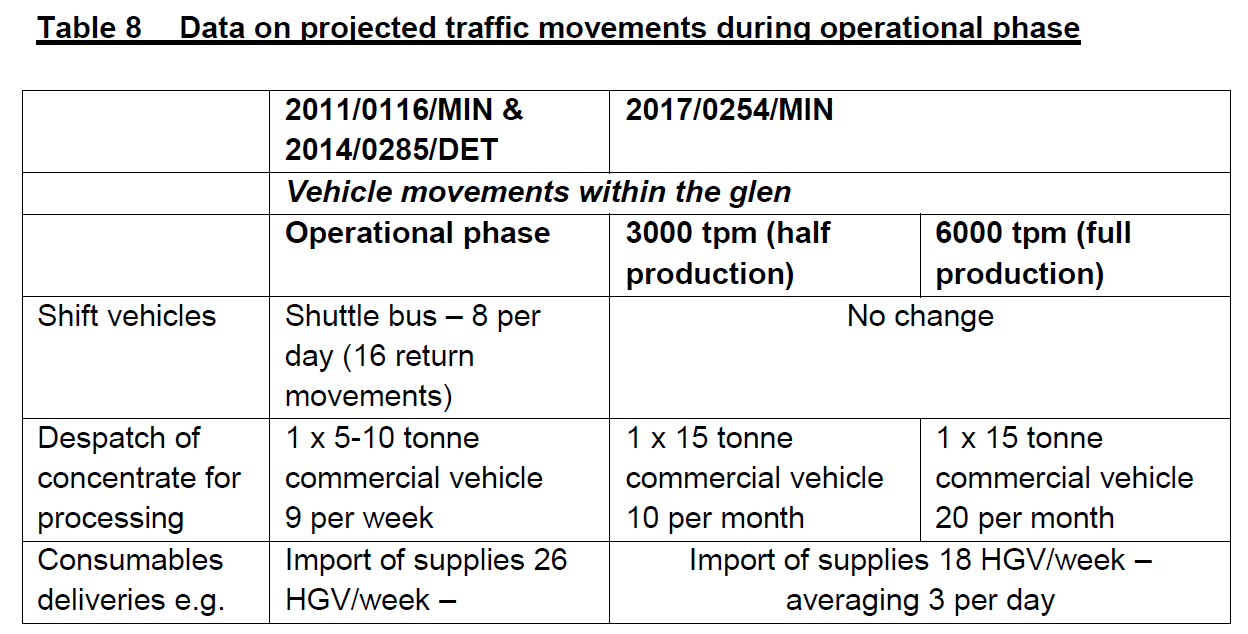
Scotgold gives very little information about the types of jobs that will be created but of the 62 a number will not be located locally at all. Those include the jobs created by the processing of the concentrate – which will take place outside Scotland – and, most likely, the people employed in transporting that concentrate to the processing plant (which might be abroad).
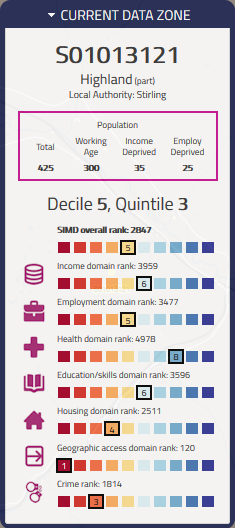
That still leaves a significant number of jobs which will be based around the mine – 50 say. The Committee Report says NOTHING about the availability of labour locally to fill those jobs, whether skilled or unskilled. Despite the claim apprenticeships will be created, it is very unlikely any of the 14 skilled jobs on higher salaries will be filled from people locally or indeed from anywhere else in the National Park. Of the unskilled jobs which will be created, the 2011 Census shows that in the four areas closest to the goldmine (from Bridge of Orchy to the ends of Glen Falloch and Glen Dochart) there were 387 people living of whom 12 were unemployed. Even if those 12 people all do gain employment at the mine that means that 38 people will need to be brought in from outside to fill the jobs.
Now, David Bell’s report argued that Cononish Goldmine would create better paid jobs than the local tourist industry with the implication being that local people might move from the tourist industry into the goldmine. That might happen of course in certain cases but the consequence will be the same, someone will still need to come in from outside to fill the vacant low paid tourist job.
Jobs therefore will need to be filled by outsiders and this could happen in two ways. Either people will need to commute from places like Fort William, Callander or Balloch – how does this fit with the LLTNPA’s commitment to promote sustainable travel? – or they will need to try and find somewhere to live locally.
The implications of the proposed gold mine for housing
The LLTNPA Committee Report, like the David Bell report before, is silent on the question of where the people filling the jobs at the goldmine will stay. I have done a check on Zoopla, and at present there appear to be two properties for sale and none for rent within about fifteen miles of the mine. Its not difficult to imagine that the current owners of the houses for sale might receive a windfall from the sale of their property if the mine goes ahead as the higher paid managers desperately look for somewhere to live locally. Its possible too that owners of some housing rented out as holiday accommodation may decide they will make more money by renting out that housing to mine workers – although that would create a loss to the tourist economy which has never been evaluated. There is, however, so little housing in the area, that its unlikely many of the 50 or so new workers could be accommodated locally.
For the lower paid jobs, commuting is unlikely to be affordable, and the predictable consequence is that much of the workforce is likely to end up living in caravans (though not on site, as the one thing planning officials are recommending is that NO caravans should be allowed in Cononish Glen). It is equally predictable that of the people living in Scotland who aspire to live in the Highlands most will not want to stay in caravans. The consequence will be that a large proportion of the workforce are likely to be transitory migrants, just like in the tourist industry.
If the LLTNPA had fulfilled its duty to promote sustainable social and economic development properly it would have considered the housing issues associated with the gold mine not just in the Committee Report but in the Local Development Plan which was adopted a year ago:
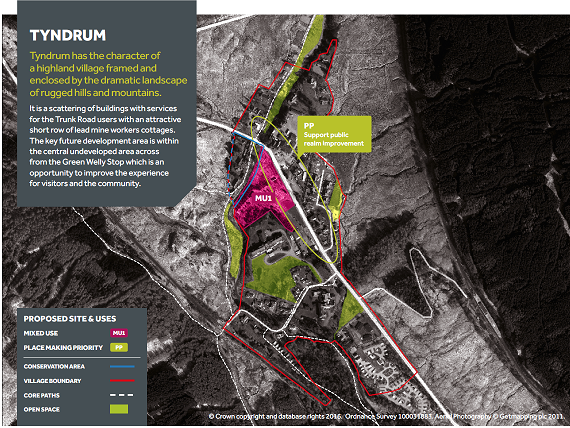
However, the Local Development Plan contains NO proposals for new housing in Tyndrum, the nearest settlement to Cononish, or wider Strathfillan. Even the Earls of Breadalbane in the 18th Century ensured cottages were provided for the people they removed from the land, forcing them to work in the lead mine – you can still see some of these at Clifton, though others such as at Newton (top pic) have now gone.
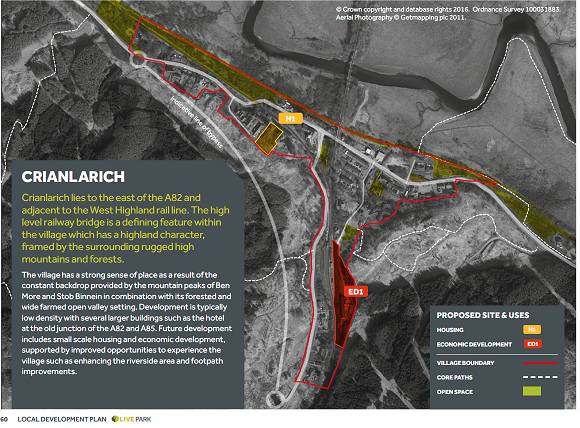
While the Development Plan does provide for some new housing at Crianlarich, it gives no indication of whether these will be affordable or available to the proposed workforce at Cononish. It appears therefore that in developing the Local Development Plan the LLTNPA paid no regard to the social and economic consequences of the goldmine going ahead. So much for sustainable communities.
The LLTNPA’s evaluation of SUSTAINABLE social and economic development
In the light of the above, consider Park’s staff evaluation of the social and economic impacts:
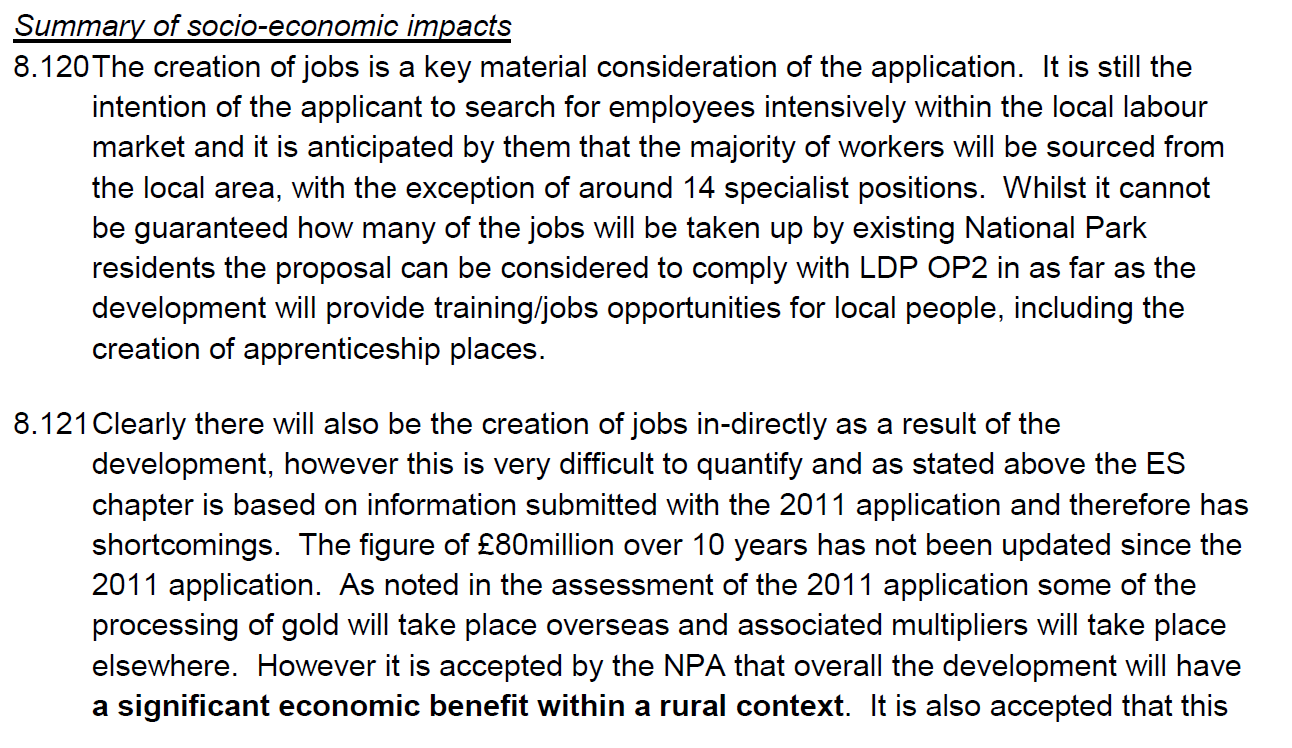

£80m sounds fantastic until you do the sums. Assume the average wage of the locally based jobs is still £32,500, assume 50 jobs for ten years and, discounting tax, the economic impact of the jobs created is £32,500 x 50 x 10 = £16,250,000 ie less than a quarter claimed in the Committee Report or just over £1.5m each year. The £80m of course covers cost of capital equipment, processing of ore off site, the cost of the three HGVs and the supplies they bring in each day. It also covered the cost of constructing the tailings dam and restoring the tailings to the mine both of which would have created more employment locally: as a consequence its totally irresponsible of the Committee Report to quote the old figure of £80m.
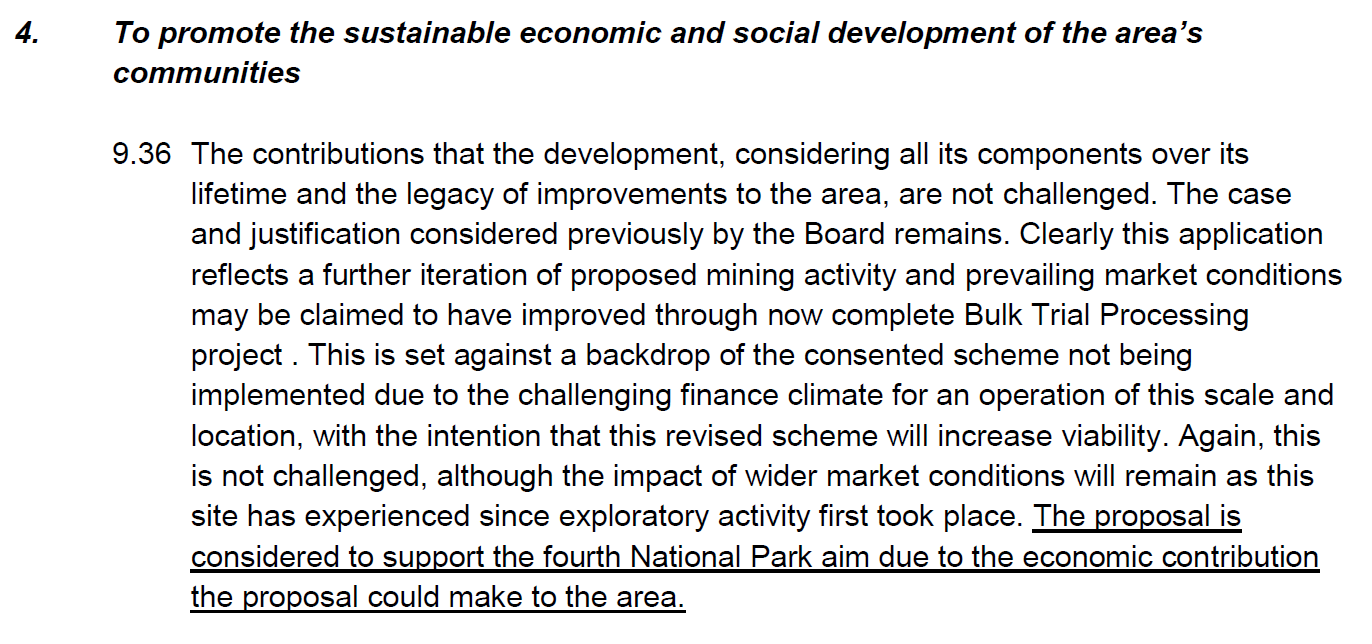
The failure of LLTNPA senior management to properly scrutinise or challenge the claimed contribution of the Cononish gold mine is a serious error. What’s more, the Committee Report fails to explain how this gold mine could be described as sustainable economically. I am not surprised: the Park last year promoted their Head of Planning to a new role of “Director of Rural Development and Planning”. The title says it all. The job is to promote development, whether sustainable or not, as is is all too evident in this Committee Report.
Here are some questions then which the Board should be demanding answers to:
- In what sense can short-term jobs, most of which are likely to be filled by people from outside the area, be described as sustainable?
- How is Scotgold proposing to transport their workers to the site (apart from the minibus shuttle up the track from the enlarged carpark at Dalrigh) and to ensure that decent accommodation is available for them.
- If further gold mines are proposed in future, what it the long-term plan to enable a mining workforce to settle in the National Park permanently and would this be compatible with the National Park’s objectives?
- And, most important of all, what are the alternatives which would better meet the National Park’s statutory objectives.
The lack of any critical evaluation of the alleged social and economic benefits of the Cononish gold mine reflects, I believe, the neo-liberal approach that the LLTNPA has taken to almost everything it does in the National Park. The market will provide – manna from heaven. Rich people, such as Nathaniel Le Roux the controlling share holder of Scotgold, backing developments should be welcomed into the National Park with open arms as benefactors whatever their actual contribution, whatever the cost to local communites and whatever the cost to the natural environment.
What needs to happen
I would hope the Board will be brave enough next week to reject the new planning application for the Cononish gold mine on the grounds that its economic benefits have been grossly exaggerated, the social costs will be considerable and that no element of the proposal can be described as sustainable.
However, the LLTNPA Board cannot do this in isolation and it should therefore at the same time commit to developing an alternative economic strategy for the National Park based on its four statutory objectives. This should start with the question of how the LLTNPA could help create locally based jobs which do not involved destroying the National Park’s special qualities. The first step, for example, in developing an alternative to the gold mine would be to consider how to create 12 jobs for the people unemployed locally at say £32,500 a year. With on-costs of 20% that comes to £468k a year.
That sounds a lot of money until you consider the huge income landowners and financiers are receiving from the hydro schemes in Glen Falloch and Glen Dochart. The net income from the proposed scheme at Ben More farm, for example, was estimated at over £75k a year (see here) and that is without taking account the inflated cost of repaying loans to the city.
There are therefore clear alternatives but for these to happen we need land reform. Instead of avoiding this issue as they have done, our National Parks should be at the forefront of engaging with local people and other interested parties to make this happen and to develop land-use strategies which benefit local communities, enhance the natural environment and promote its enjoyment. Until they do this, sustainable economic development will never happen in our National Parks and the LLTNPA will continue to attempt to justify the unjustifiable.

Looks like money talks if you believe the tone of this upbeat article… http://www.heraldscotland.com/news/15659732.Scottish_gold_mine_set_to_open_next_year/ …reads as though Nat le Roux the major investor has been led to understand that the planning permission is a formality, and so starting prep work beforehand is low risk. According to The Times “a former stockbroker, Le Roux, 51, was chief executive of IG Group, the City-based spread betting operation”. He remains an independent director of The London Metal Exchange. Looks like a vanity project for one of the richest individuals in the UK – wonder what he thinks about this destruction of the local environment?